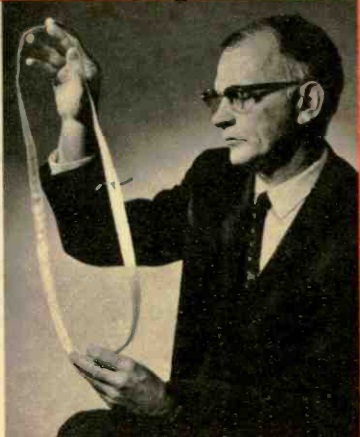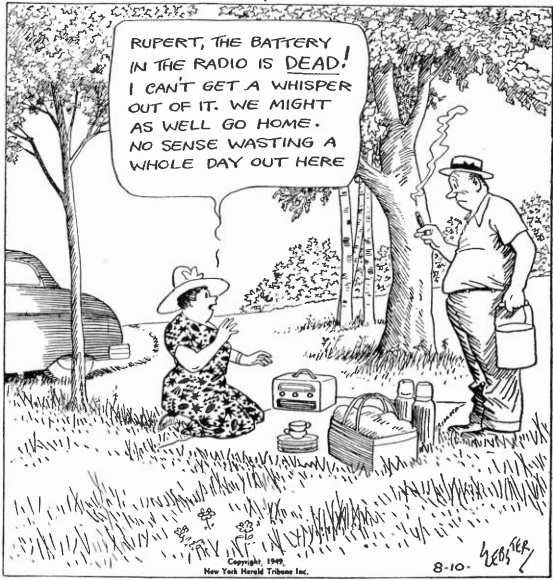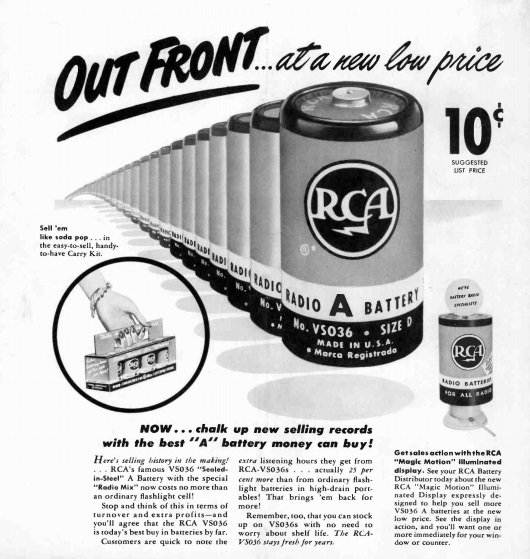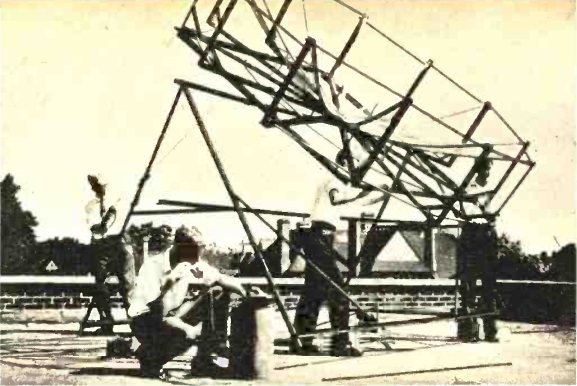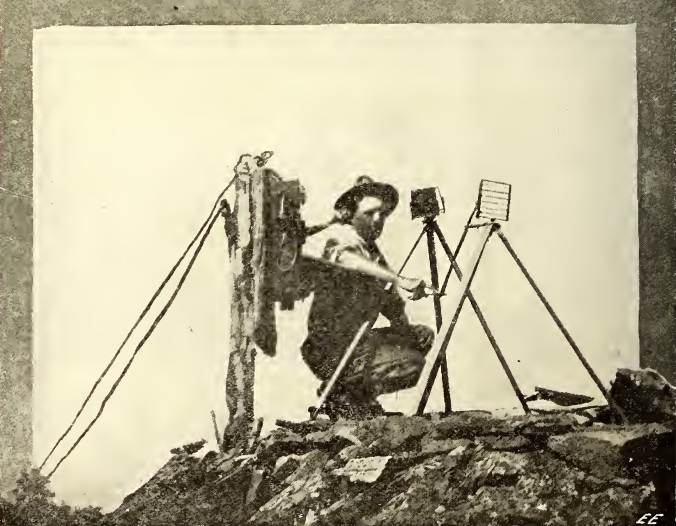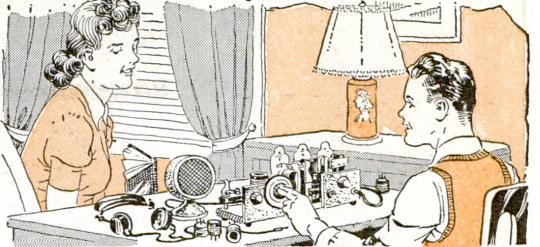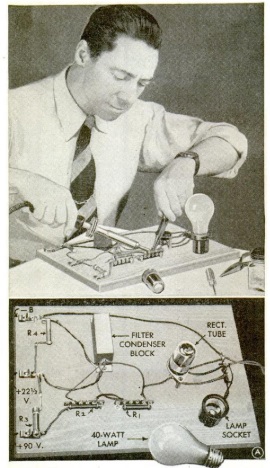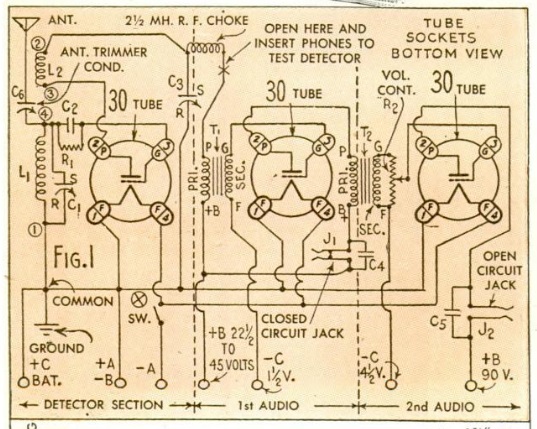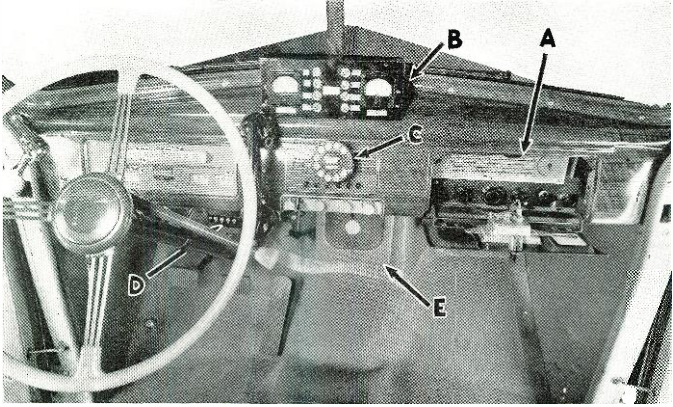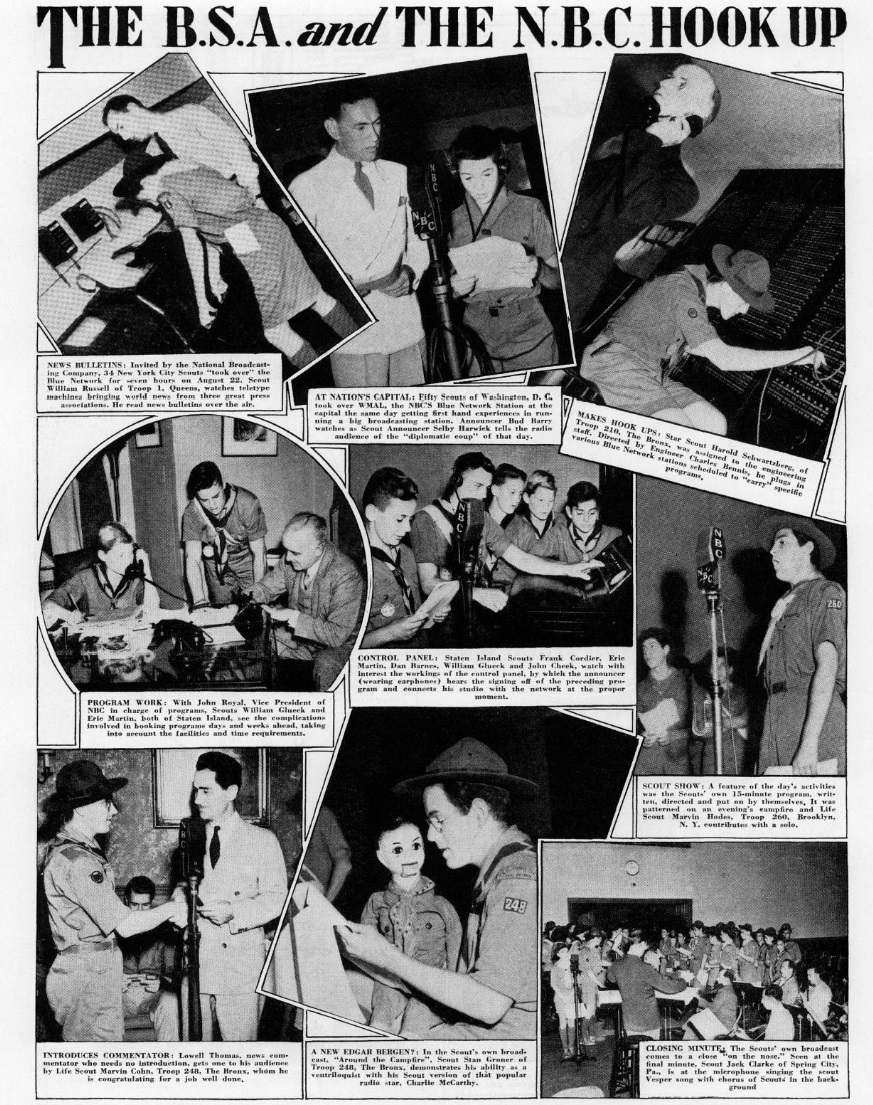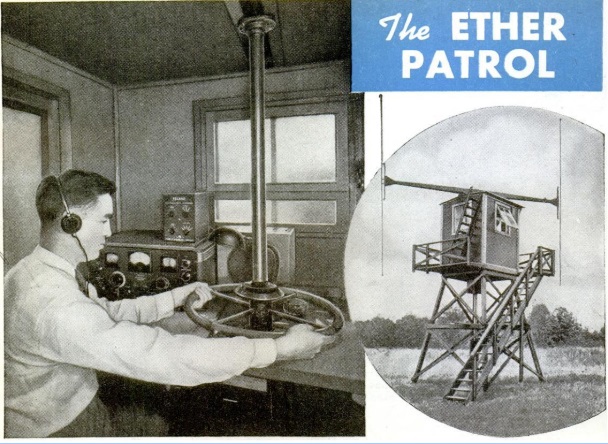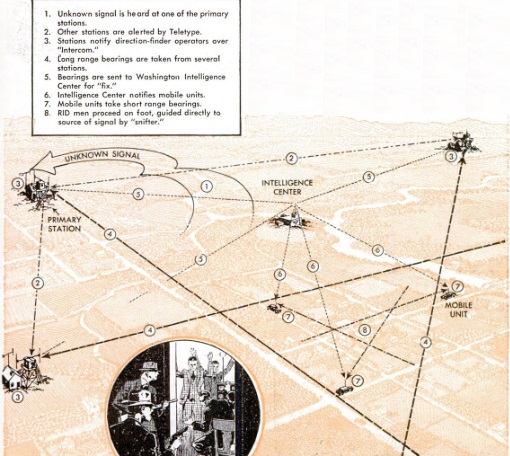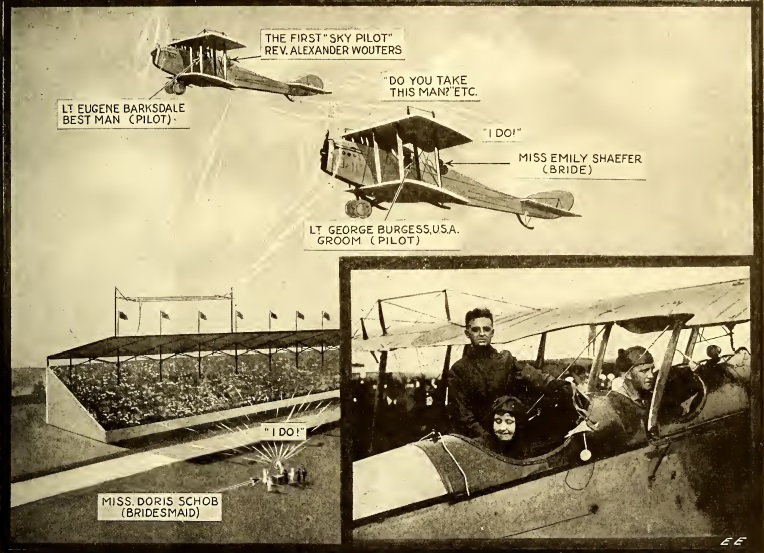 We’ve previously reported two aeronautical weddings via radio, in April 1922 and June 1922.
We’ve previously reported two aeronautical weddings via radio, in April 1922 and June 1922.
Those, however, were not the first, since the wedding of Lt. George Burgess and Emily K. Schaefer took place in 1919. The bride and groom were in one plane, piloted by the groom. The minister, Rev. Dr. Alexander Wouters was in another plane piloted by best man Lt. Eugene Barksdale. The event took place at the Police Field Day festivities at the Sheepshead Bay Speedway near New York City.
A receiver hooked to a large public address system was in place on the ground, allowing the gathered guests to hear the entire ceremony. At 5:10 PM, the planes took off from the speedway. As those on the ground listened, the minister began to read the ceremony, and the couple exchanged vows. A few minutes later, one of the planes announced “we are coming down,” and the bride and groom landed to applause and waving hats. As the couple moved to an automobile, the bridal party rode past the stands while the police band played the wedding march.
Sadly, Lt. Burgess died in a firy plane crash in 1925 at New Salem, PA. After an airshow in Washington, he was flying to Dayton Ohio with an editor and photographer from the Dayton Herald. In a thunderstorm, the plane crashed to the ground, killing all aboard. His obituary described him as a wireless expert and instructor in radio airplane communications. He is buried at Arlington National Cemetery. The couple had two children. The bride died in 1969 at the age of 77.
The best man also died in an airplane crash in 1926. Barksdale Air Force Base in Louisiana is named in his memory.

